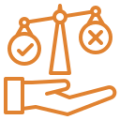Training Content and Parts
When I start a training audit, I really get into the specifics and check out both the online and in-person aspects we use during our sessions. It’s a good idea to make sure everything is up-to-date and sharp. Old or irrelevant parts can really mess with the learning process and make it difficult to keep everyone involved and on track to achieve our goals.
So, the first thing I do is make sure all the information we’re working with is correct and the latest. With how quickly things change these days, it’s super smart to stay ahead of any new developments. I always make sure to check the sources of our info and the last time they were updated.
Next, I check if the parts we’re serious about resonate with our participants. Do they reflect the realities people face every day? Are they interesting enough to hold everyone’s interest? Adding interactive features like quizzes or real-life case studies can really help keep everyone alert.

It’s now also really important to adapt the training to different learning styles – not everyone processes information the same way. Some might be captivated by videos or infographics, while others may like complete documents or hands-on activities.
Now, let’s talk about how we roll out this training. Whether a person is online or a mix of both, the delivery method can majorly affect how well the content is received.
From my experience, changing these aspects can help with engagement, participant satisfaction, and performance. I really believe it’s meaningful to update and refine our training methods to keep up with industry patterns and learner preferences. Keeping everything relevant and fresh really helps keep that connection strong, right?
Review Resource Allocation and Costs
When it comes to managing training costs, the main thing is to budget and make sure we’re spending our money well. It’s really important to squeeze value from every dollar and direct the funds right where we need them to meet our training goals.
First, check out what resources you have, like trainers, equipment, technology, and venues. Then make a list of these and see if they line up with your goals. To give you an example, have you ever seen how sometimes we shell out a ton for a fancy venue when an easy online session could do the job for way less money? Finding these mismatches is important for our resources.

Next, talk about costs by listing and sorting all the training-related costs into categories like instructor fees, equipment costs, and venue rentals. This breakdown shows where the money’s going, which makes it easier to handle. Then compare these costs to your planned budget and what’s typical in your industry, which helps spot any spending that’s over the top or too low.
This complete financial check helps find potential savings or places where you might need to adjust your budget. To give you an example, if we’re using a bunch of paper, going online can cut down costs. In the same way, if venue rentals are high, we might look for better deals or partnerships to bring down those costs.
Getting this right is super important because a well-funded, efficiently managed training program is important to any company’s growth. Ignoring these things can lead to wasted resources, which makes the training less useful. No company wants that.
So, paying close attention to these things has really shown me the value of being complete and proactive. I wanted to share these tips hoping it might give you some fresh ideas on how to handle your budgeting tasks!
Measure Training Effectiveness
When we talk about assessing training programs, it’s super useful to mix hard numbers with real-life stories to fully understand their change. Reflecting on my experiences, I’ve found that different methods of evaluation really open up my perspective and improve our future training.
Let’s kick off with tangible things like quiz scores and workflow efficiency. These types of data are awesome for seeing the direct effects of our training right away. To give you an example, reviewing quiz scores after training helps clarify how much participants have picked up. Monitoring changes in workflow and performance shows if the training makes a real difference in everyday work.
Communicating directly with employees is just as important. Having personal conversations and sending out surveys are great ways to hear honest feedback. This strategy lets you get a sense of how the team feels about the training and what skills they’re picking up. Organizing focus groups and discussions with both staff and managers gives a deeper look at any behavioral changes post-training.

I’ve found the Kirkpatrick Model to be especially useful. It evaluates training from four perspectives: Reaction, Learning, Behavior, and Results, providing a complete picture of training effectiveness.
It’s also a good idea to share all this info. With a balanced view of what works and what doesn’t, everyone can make better choices about future training.
Lately I’ve been using online platforms to instantly track how employees use new tools and software post-training. It’s amazing because it quickly tells us if the training is useful in helping people adjust to new tech, possibly speeding up the learning curve.
Also, I always try to step back and see the bigger picture, like how training influences employee retention and return on investment (ROI). These aspects really show the long-term benefits of our training initiatives and help guide our budgeting and planning for upcoming sessions.
Finally, the goal is to find out which training programs create real, lasting improvements.
Compliance with Regulations
Understanding how training programs match up with industry standards and legal requirements is major for any organization. It’s really smart to do a complete compliance audit to make sure everything is in order.
First off, find out the main points of the compliance resume. It’s really helpful to find which regulations apply to your specific training campaigns and set audit goals that fit what your organization needs. Creating a compliance audit checklist is a perfect way to keep everything organized and buttoned down.
Next, go and visit the sites yourself. Being there lets you see how things are done, check the controls in place, and talk with the staff – it’s super useful to see the procedures firsthand.
After visiting the sites, collect all the relevant data and documents like policies, procedures, licenses, and records. Reviewing these is important to figure out how well you’re sticking to the rules and making sure you meet both external and internal standards.
It’s also important to look over your internal policies and procedures. This helps you find parts you can make better and make sure you’re following the rules, and it also helps with how you work inside. During these audits, it’s important to stress creating a culture of compliance. It’s a good idea to build an environment where everyone understands the importance of compliance and actively works to keep high standards.

Regularly monitoring these audits lets you stay up-to-date with regulations and spot potential problems early, which helps you quickly take steps to cut down compliance risks.
Adding risk assessments into the audit process is another proactive step that lets you expect potential compliance risks and their effects. This gets the organization ready for future challenges and strengthens your compliance efforts.
Periodically revising and updating your organizational policies, processes, and controls makes sure you keep meeting compliance needs and stick to best practices. During audits, it’s also important to talk with all sorts of stakeholders to get a full view of the organization’s compliance culture and practices. This large strategy is really important for any complete compliance audit, especially in training setups.
You see, keeping a close watch on these intrinsics keeps you compliant and also improves how you work. It’s kind of like having a scheduled check-up. It might seem boring sometimes, but it definitely keeps us healthy in the long term.
Find Training Needs and Gaps
So, when deciding the benefits of helping teams organize and make the most of everyone’s unique skills, it all starts with figuring out what we need to learn to hit our targets. Having been in that spot myself – needing to find out important skills – I’ve found that lining up our training with the company’s big goals can really be incredible.
Let’s dig into those specific skills and knowledge areas that help get a team from good to great. Usually, it’s the little skills that lead to major wins. Realizing where we’re falling short can really open our eyes, showing us where focused training can make a huge difference. I use eLearning team interactions and feedback surveys to spot these areas.
Doing a complete Training Goals Assessment is super useful. It pinpoints areas where people or teams may be falling behind and gives us a snapshot of the wider company needs, which really helps us focus our support.
Also, I think it’s smart to make sure everyone feels free to talk about the training they get and their career goals. This openness helps us create a learning environment that really meets our team’s needs.

Pushing for a culture of continuous improvement through coaching and mentoring is a good idea. It supports personal development and also keeps on helping us spot training needs. It’s important that everyone sees the value of these assessments.
When setting training priorities, I always make sure they line up with our organization’s goals. Picking the right methods – planning the timelines, setting the budget, and figuring out how to measure the results – are all needed steps.
Lining everything up with our bigger goals is a proven strategy for building a useful training plan. This alignment will make sure that our efforts are powerful and make the whole process meaningful for everyone involved. After all, we’re here to see real benefits from our investment in training, right?
Recommend Actions and Monitor Progress
We need to define clear steps and consistently monitor our progress. It’s essential to continuously question if we’re providing our trainers and trainees with the best tools out there.
Imagine creating a culture of continuous improvement like perfecting a recipe – we need to stay flexible and adjust our training approaches as our company and industry needs change. Actively looking for feedback is a no-brainer. It shows us how useful our methods are on the spot and will make sure our training is always on the upswing.

Improving our training isn’t a sprint – it’s more like a marathon. So let’s start now – I want to elevate our training from basically informative to really life-changing by tomorrow. Join us at HRDQ-U, where we take learning to another level. We have loads of resources perfect for those excited to excel in HR and leadership. Also, make sure to tune into our upcoming webinar, Show the Value of What You Do: Measuring and Achieving Success in Any Endeavor. It’s filled with excellent strategies to help you show the importance of your work, no matter your role.
For more ideas and things you can do as a leader to elevate your team, check out our library of leadership webinars and blog posts that each focus on a different aspect of leadership.































